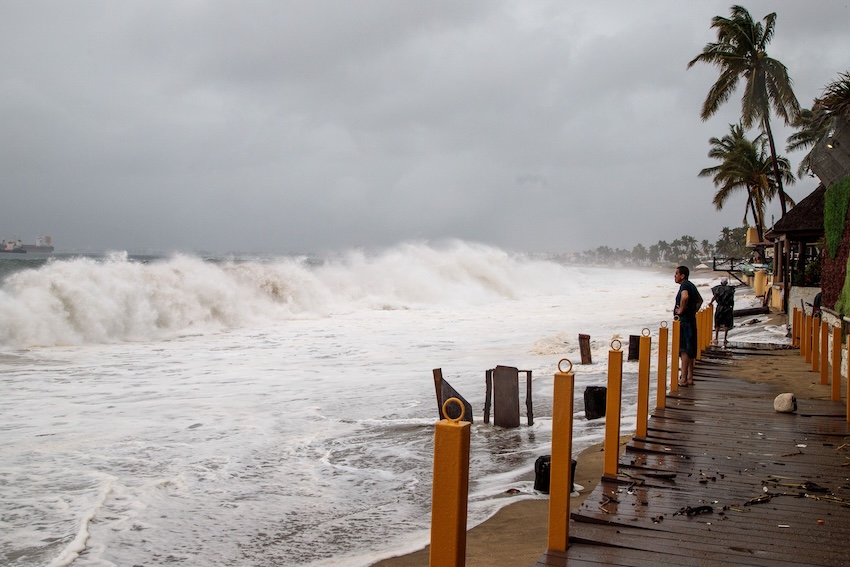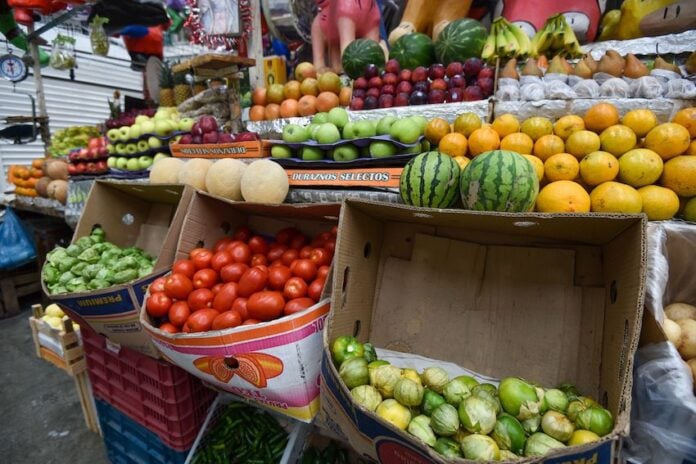In honor of World Statistics Day on Oct. 20, Mexico’s national statistics agency INEGI published a small book presenting the 99 facts you need to know about Mexico.
All week, we will be sharing the book’s contents translated into English.
Here is part 3! Read facts 21-40 here.
41) In 2024, households spent an average of 15,891 pesos (US $865) per month. Mexico City had the highest average, at 22,128 pesos (US $1,205), while Chiapas had the lowest, at 9,039 pesos (US $492) per month.
(Source: INEGI, National Survey on Household Income and Expenditures – ENIGH, 2024)
Household spending varies widely by region, reflecting differences in income, prices and cost of living.
42) In 2024, Santiago was the most registered name in Mexico, with 7,570 people; among females, the most common name was Sofía, with 5,192 people.
(Source: INEGI, Registered Birth Statistics – ENR, 2024)
Naming trends in Mexico have evolved, with classic names still popular alongside more contemporary choices.
‘Mary Joseph,’ ‘Little Town’ and ‘Holy Conception’: The unusual names I hear in Mexico
43) Between April and June 2025, 14.3 million people worked more than 48 hours per week.
(Source: INEGI, National Survey on Occupation and Employment – ENOE, second quarter 2025)
Long work hours affect nearly a quarter of Mexico’s workforce. A 6-day workweek is common in both formal and informal jobs, though the current administration is pushing to standardize a 40-hour or 5-day workweek.
44) In 2023, of the 8.9 million people with a disability in Mexico, 53.4 percent (4.7 million) were women.
(Source: INEGI, National Survey on Demographic Dynamics – ENADID, 2023)
Women represent a slight majority among people living with disabilities, a trend that grows with age. The intersection of gender and disability poses unique challenges in access to education, employment, healthcare and protection from discrimination.
45) Mexico has 12,557 kilometers of coastline — equivalent to traveling from Tapachula, Chiapas, to Tijuana, Baja California, three times.
(Source: INEGI, Coastline Data – LIC, 2023)
Mexico’s extensive coastline touches the Pacific Ocean, the Gulf of California, the Gulf of Mexico and the Caribbean Sea.

46) There are different types of households in Mexico; one of these is the single-person household, formed by just one individual. In 2023, 5.4 million such households were recorded.
(Source: INEGI, National Survey on Demographic Dynamics – ENADID, 2023)
Single-person households make up an increasing share of Mexican homes. This trend accompanies social changes such as later marriage, urbanization and a drop in fertility rates.
47) In 2023, the economic value of unpaid work performed by women in Mexico was nearly three times greater than that of men: 86,971 versus 36,471 pesos per year.
(Source: INEGI, Satellite Account of Unpaid Household Work – CSTNRHM, 2023)
Women carry out the large majority of unpaid domestic and caregiving tasks. This reflects persistent gender roles; unpaid labor remains central to household functioning, yet contributes to inequality in economic and social opportunities.
48) Between April and June 2025, 6.3 million people were employed in Mexico’s primary sector.
(Source: INEGI, National Survey on Occupation and Employment – ENOE, second quarter 2025)
The primary sector includes agriculture, livestock, forestry, fishing and hunting, and accounts for roughly one in ten jobs in the country.
49) In 2021, the main types of violence experienced by women in Mexico throughout their lives were psychological (51.6%), sexual (49.7%) and physical (34.7%).
(Source: INEGI, National Survey on the Dynamics of Relationships in Households – ENDIREH, 2021)
More than half of women in Mexico have faced psychological or sexual violence at some point.
1,500 Oxxos in Jalisco will serve as safe spaces for threatened women
50) There is a gender gap in caregiving for people with disabilities. In 2022, among those who provided this care, women dedicated an average of 35.9 hours per week, while men averaged 32.7 hours.
(Source: INEGI, National Survey for the Care System – ENASIC, 2022)
Most caregiving hours are still provided by women, who often balance these duties with employment and other family responsibilities.
51) What is Mexico’s literacy rate? In 1895 (the first year a modern census was carried out in Mexico), only 17.6% of the population aged 15 and over could read and write. By 2020 (the year of the most recent census), this had risen to 95.0%.
(Sources: DGE. General Census of the Mexican Republic, 1895; INEGI. Population and Housing Census – CPV, 2020)
Literacy rates in Mexico have risen dramatically in the last century, reaching near-universal levels today. Progress reflects expanded access to education and improved opportunities, though there are still regional and gender gaps in the country’s literacy.
52) Between 2000 and 2020, the average years of schooling for women in Mexico rose from 7.2 to 9.6 years; for men, it went from 7.7 to 9.8 years.
(Source: INEGI, Population and Housing Census – CPV, 2000 and 2020)
The gender gap in education has narrowed significantly, reaching near parity in years of schooling. Women are now equally likely — or even more likely in younger cohorts — to finish secondary or higher education, though differences persist in certain fields and access in rural areas.
53) In 2024, people with a disability in Mexico had an average monthly income of 6,927 pesos (US $377), compared to 10,366 pesos (US $565) for those reporting no disability.
(Source: INEGI, National Survey on Household Income and Expenditures – ENIGH, 2024)
This sizable income gap reflects continued barriers to education, employment and inclusion for people with disabilities. Inequality in pay and job access is even greater for women and those living in rural or marginalized areas.
54) Small grocery stores (tiendas de abarrotes) are the most common retail establishments in Mexico. In 2024, 672,075 of these businesses were registered.
(Source: INEGI, National Directory of Economic Units, 2024)
Small grocery stores form the backbone of the local retail economy throughout cities and rural areas. These stores play a crucial role in daily access to food, basic goods and community life, despite competition from large supermarkets.
My family runs a convenience store in México state: Here’s everything I’ve learned
55) In 2023, 214 billion cubic meters of water were sourced from groundwater, surface water, and rainfall for human use and economic activities in Mexico. This is equivalent to the volume of 85.7 million Olympic-sized pools.
(Source: INEGI, Economic and Ecological Accounts of Mexico – CEEM, 2023)
Agriculture is the largest consumer, accounting for almost a third of withdrawn water, followed by industry, services and households.
56) Between April and June 2025, microbusinesses employed 23.6 million people — 39.7% of the total working population.
(Source: INEGI, National Survey on Occupation and Employment – ENOE, second quarter 2025)
Small-scale enterprises are the most important source of jobs in Mexico, especially for self-employed workers and informal labor.
57) The Veracruz Reef System is a protected natural area where human activities and marine ecosystems coexist. In 2020, more than 809,000 people lived in 90 localities near this zone.
(Sources: INEGI. Línea de Costa – LIC, 2015; INEGI. Geo-statistical Framework – MG, 2020; INEGI. Population and Housing Census – CPV, 2020)
The region surrounding the Port of Veracruz is vital for biodiversity, tourism and fishing, while also facing pressures from development and environmental change.
Veracruz residents protest port expansion threatening Gulf’s coral reefs
58) The Total Fertility Rate (TFR) is the average number of children a woman would have over her reproductive years. In Mexico, this TFR dropped from 2.21 in 2014 to 1.60 in 2023.
(Source: INEGI, National Survey on Demographic Dynamics – ENADID, 2014 & 2023)
Fertility rates in Mexico have declined sharply, now among the lowest in Latin America. The change reflects later childbearing, greater access to education and contraception and shifts in family aspirations.
59) In Mexico, a dry climate covers 50.3% of the national territory.
(Source: INEGI, Climate – CLIM, 2020)
Most of northern and central Mexico is dominated by arid or semi-arid zones, with low annual rainfall and high evaporation rates.
60) In 2023, 52.4% of people who personally carried out a government trámite went to a government office; 16.2% used the internet.
(Source: INEGI, National Survey on Government Quality and Impact – ENCIG, 2023)
Most people still prefer in-person government services, though digital options are on the rise.
Mexico News Daily
